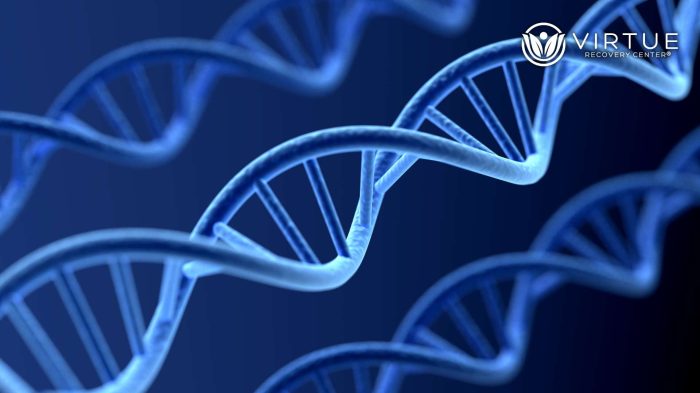Key Takeaways
- Yes, research shows crystal meth can damage DNA and alter genetic stability.
- Methamphetamine use triggers oxidative stress and neurotoxic effects in the brain.
- Long-term meth use affects DNA methylation and gene regulation.
- Epigenetic mechanisms may explain lasting cognitive and emotional changes.
- Treatment for methamphetamine addiction can help restore brain health and stability.
Introduction
Yes — crystal meth use can damage DNA. Scientific studies demonstrate that methamphetamine (meth) induces genetic and cellular stress, leading to DNA damage and chromosomal aberrations. The toxic effects of meth cause significant harm to the brain, impacting memory, emotions, and decision-making.
Methamphetamine addiction remains one of the most destructive substance use disorders, with both acute and chronic meth exposure linked to epigenetic changes and neurotoxic effects. Understanding how meth causes induction of DNA damage helps explain why recovery is both medically and psychologically complex.
Understanding Methamphetamine and Its Toxic Effects
Methamphetamine — commonly called crystal meth — is a highly addictive stimulant affecting the central nervous system. It increases dopamine levels, producing euphoria, energy, and alertness. Over time, meth use disrupts normal brain chemistry, leading to methamphetamine addiction and severe mental and physical health effects.
Health Effects Associated with Meth Use
The effects of methamphetamine are both short-term and long-lasting. Chronic methamphetamine use damages neurons, alters brain regions responsible for learning and emotion, and triggers DNA methylation changes.
Toxic effects may include:
- Sleep disruption and aggression
- Cognitive decline and memory loss
- Cardiovascular and liver issues
- Depression, anxiety, and psychosis
Learn how other substances affect the brain by visiting Virtue Recovery Center’s blog.
How Crystal Meth Causes Induction of DNA Damage
Research demonstrates that meth exposure generates oxidative stress, which harms brain cells and DNA integrity. In laboratory studies, methamphetamine induces DNA damage and chromosomal instability through:
- Oxidative stress: Excess free radicals that break DNA strands.
- Epigenetic modification: Alterations in DNA methylation and histone acetylation that regulate gene activity.
- Inflammation: Chronic inflammation in brain regions accelerates cellular aging.
These effects result in differential alterations in gene expression, which can persist long after stopping meth use. The neurotoxic effects of meth are linked to changes in the brain’s reward circuitry, reinforcing dependence and cravings.
Epigenetic Mechanisms and DNA Methylation in Meth Users
Epigenetics explains how environmental and chemical exposure, such as meth use, changes gene expression without altering the DNA sequence. Methamphetamine triggers epigenetic mechanisms involving DNA methylation at sites like synaptophysin, a gene important for neural communication.
Over time, epigenetic changes from meth use may contribute to:
- Increased meth craving and dependence
- Emotional instability
- Impaired cognitive performance
- Heightened relapse risk
Studies have found that methamphetamine causes differential alterations in DNA methylation and mRNA expression, affecting stability in human-derived brain cells. These biological disruptions may explain why meth addiction is accompanied by long-term mental health challenges.
Brain Damage and the Central Nervous System
Meth primarily targets the central nervous system, especially areas regulating mood, motivation, and memory. Repeated meth exposure disrupts communication between brain cells and damages the prefrontal cortex — the part responsible for judgment and control.
Researchers have linked methamphetamine exposure to:
- Traumatic brain injuries-like damage
- Decreased dopamine function
- Inflammatory responses in brain areas controlling emotion
- DNA damage and chromosomal aberrations that affect neural recovery
Learn more about meth-related brain changes at Meth Relapse Challenges and Bipolar Disorder Therapy for Adults.
Health Effects and Toxicity Associated with Methamphetamine Use
Both acute and chronic methamphetamine use have been linked to neurotoxic effects. Even a single dose of meth can trigger oxidative stress that affects cellular repair mechanisms. Meth self-administration in animal models shows neurodegeneration in brain regions tied to memory and decision-making.
The adverse health effects of methamphetamine addiction can include:
- Heart arrhythmias and hypertension
- Malnutrition and dehydration
- Emotional dysregulation and paranoia
- Permanent DNA instability
Understanding these toxic processes emphasizes the urgency of seeking treatment options for meth addiction.
Treatment Options for Meth Addiction
While damage from meth can be severe, recovery and brain healing are possible. Meth treatment focuses on stabilizing neurochemical balance and promoting healthy gene regulation over time. Evidence-based treatments may include:
- Cognitive-behavioral therapy (CBT)
- Motivational interviewing (MI)
- Relapse prevention therapy
- Dual diagnosis programs for co-occurring disorders
Explore specialized treatment approaches through Comprehensive Addiction Treatment at Virtue Recovery Center.
Conclusion
Scientific evidence confirms that crystal meth use can damage DNA and alter brain function through epigenetic mechanisms. The resulting DNA methylation changes can affect emotional health, memory, and behavior long after meth use stops.
Recovery, however, is possible with comprehensive treatment, medical support, and compassionate care.
Call Virtue Recovery Detox in Sun City West today at 623-777-2400 to speak with a caring team member and begin your recovery journey.
FAQs
Does meth use really damage DNA?
Yes, research indicates methamphetamine use causes induction of DNA damage through oxidative stress and altered methylation processes.
What part of the brain is affected by meth use?
Meth affects several brain regions, including the prefrontal cortex, hippocampus, and striatum — areas involved in memory, judgment, and mood regulation.
Can the brain heal from meth damage?
While some damage may be permanent, neuroplasticity and targeted treatment options for meth addiction can help the brain recover over time.
What are the long-term effects of chronic meth use?
Chronic methamphetamine use is associated with epigenetic changes, emotional instability, and structural brain damage.
How can someone recover from methamphetamine addiction?
Recovery involves therapy, medical detox, and long-term support through programs like those offered by Virtue Recovery Detox Sun City West.









